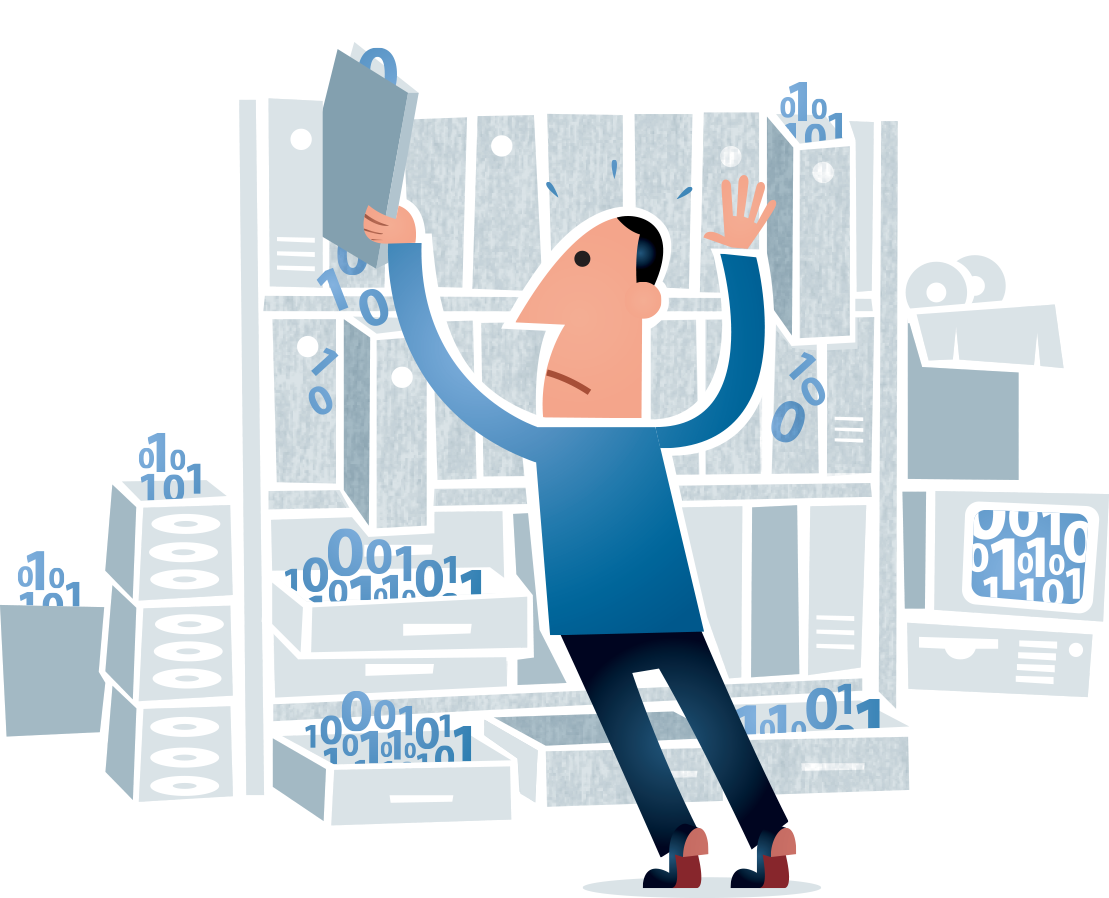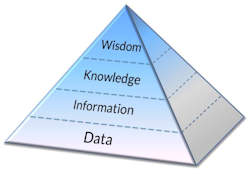Table of Contents
Information & Data Management
Many companies have loads of data, but hardly any steering information.
Information Management
Introduction
Information Management can have many different meanings. Good definitions emphasize that people have information requirements in order to steer processes by using information technology.

Information Management is centered around People, Processes and IT.
eQTeam sees identifying, analyzing and controlling information requirements as core activities of Information Management. Besides these, other key aspects are: data origin, data lineage, authorization, compliance with regulations, and especially privacy-protection of employee and customer data.
Which steering information is necessary?
Many decisions are often taken based on gut feeling stemming from past experiences. Informed decisions, however, can be very different from those purely based on a vague notion.
When identifying the need for steering information the question often arises: which steering information is needed to make a well informed decision?
What makes answering this question tedious, is that information requirements:
- are often not very specific;
- are personal and have a limited shelf life;
- can vary depending on the situation and moment in time;
- when satisfied, often trigger new information requirements.
Many new requirements are based on the answers to earlier ones. Software like Business Intelligence tools are specialized in serving this continued need for new information.
Why pick eQTeam?
- We help you acquire adequate and complete steering information on time.
- Due to our 20 year involvement in many IT related projects, we are experts in the area of Information Management.
- In many companies, incomprehension between higher management and information providers like IT and operational departments is quite common. We are used to building bridges.
- We alternate between a helicopter view and attention to detail. As soon as information becomes available, all details should be right. Incorrect information is no information.
- One important aspect that we don't lose out of sight is meta-information and storing this in some sort of repository. Steering information might be available in some form, but where is it? And is it still accurate?
- We keep up and improve our knowledge in this field, and we are well aware that compliance with privacy regulations is getting more important each day in a digital world.
Do not hesitate and contact us now.
Description and origin of steering information
Once an information requirement is clear, and hence is known which information is needed to make a well informed decision, there are 2 next steps:
- the information requirement needs to be described accurately and unambiguously as well as the presentation formats;
- required data items need to be determined and obtained from internal and/or external systems.
Describing requirements unequivocally is a tedious chore. Many people give different meanings to the same term. Or, one and the same fact can be denominated by several synonyms.
A task for Information Management is building a meta-information collection which stores: what is meant by which term, how calculations should be performed, and from which data sources information items are fed.
Data sources are often registration systems which are transaction oriented. Managing these are often denominated by the term Data Management.
Data Management
Introduction
Data is an important resource in an organization. When employees cannot dispose of business data, or when data get lost, these events will seriously disturb business processes.To mitigate damages there should be an integrated approach to data management, consisting of five elements:
- Compliance
- Control of data and metadata
- Storage
- Back-up & Archiving
- Recovery & Retrieval

Transaction data
When the term transaction is used, people mostly think of a financial transaction. The latter is however only a specific example of this term which refers to a number of actions that should be completed as a whole to achieve a status change of something.
So transferring an amount of money can only be successful when the amount is deduced from account A and added to account B. If the monetary registration system would not work correctly, money can be created or lost. The same applies to inventory and transport registration systems. Registering facts that do not result in a status change are irrelevant.
Various registration systems
Systems which store transactions are called transaction systems. A very commonly used denomination is On-line Transactional Processsing or OLTP system. Many employees in IT will use the term and, even more so, its abbreviation without thinking. eQTeam prefers to call these, registration systems as registration is the main goal.
Nearly all companies have several systems to registrate their business data. And this leads to additional complexity. Not only data structures of underlying databases differ widely, also master data are often stored in duplicated forms.
Registration does not lead to information
Data is not equivalent to information. (See also: What is information?) Registration is about storing data in a database. Information is about acquiring and presenting datasets from one or more databases and interpretation of the results by using metadata.
What is metadata?
Metadata explains the meaning of a certain data-element. In a certain table a number is stored. What number is it? Is it a monetary amount, a volume, or something else? Can all numbers be added? Etc.
Why pick eQTeam?
- We have much experience with database disclosure and data interpretation gained during various projects in different lines of business.
- We encounter oftentimes that lack of metadata leads to misinterpretation of data.
- We know that nearly all registration systems contain polluted data. When transforming data into information, cleansing is an activity not to be taken lightly after extracting data from a source system.
- Most businesses do not have a central data management function, let alone a central metadata repository. We offer a universal solution for metadata.
Do not hesitate and contact us now.
Techniques of disclosure
Business Intelligence
According to Gartner, the process to transform data into information and acquire knowledge by analysis and interpretation in order to benefit stategically. This area arose in the mid 1990's since many managers realized that in their company a lot of data was being stored, but very little steering information was available.
When Business Intelligence is regarded from a wider perspective it is the continuing process in which organizations gather and register data in a structured way before analyzing these and applying gained knowledge during decision-making processes to improve the company's performance.
Data Warehousing
A Data Warehouse (DWH) is a collection of datasets originating from one or several transaction systems (also known as registration systems) gathered to combine these into useful management information. Due to its American origin, the process of setting up a Data Warehouse has been turned into a gerund-like word called data warehousing. By now the term Data Warehouse mostly refers to the underlying datastructure meant for numerous Business Intelligence reporting tools to acquire information from.
Until about 15 years ago it was very common to store as much detail in a DWH as possible. Nowadays many countries have very strict privacy-laws, forcing a business to decide whether sensitive detailed information is really necessary for steering purposes. If so, each customer needs to be informed and approve the use of his/her personal data. Often this can be achieved by adding this use to the general terms and conditions and having customers agree to them prematurely.

